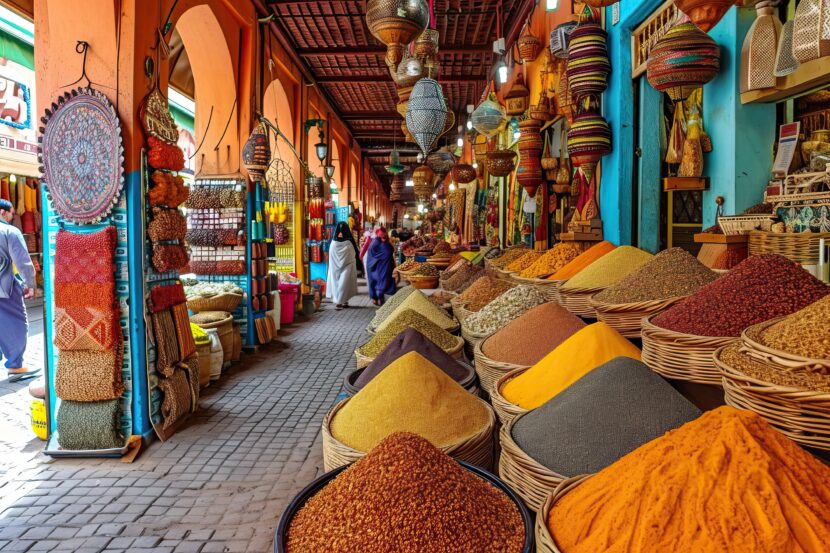TORONTO — With Canadians looking to fulfill their travel goals further and farther afield, there’s a bucket list destination that’s closer than clients might realize.

Siham Fettouhi, Director for the North American Markets at the Moroccan National Tourism Office (MNTO)
As Siham Fettouhi, Director for the North American Markets at the Moroccan National Tourism Office (MNTO), tells Travelweek, Morocco remains the closest African destination to Canada, with a flight time of six hours and 30 minutes from Montreal, and seven hours and 40 minutes from Toronto.
This iconic destination is also served by two Canadian airlines, and one Moroccan carrier.
Travelweek spoke to Fettouhi recently about Morocco’s booking trends, lift from Canada, a season-by-season guide for travel to Morocco, and much more.
Travelweek: Canadians are open to experiencing new destinations this year. What are you seeing from the Canadian market so far in 2025?
Fettouhi: “We have been witnessing strong momentum for Morocco as a destination since the beginning of 2025, with the first quarter showing encouraging results with a 31% increase compared to the same period in 2024.
“Morocco’s current popularity is the result of its undeniable competitive strengths in the Canadian market, including an exceptional year-round climate and a diverse tourism offering that spans culture, seaside resorts, mountain and desert activities, and a wide range of other attractions. This growing momentum confirms Morocco’s leadership position and reflects the ongoing efforts to diversify and enhance its tourism offering.”
Travelweek: How easy is it for Canadians to get to Morocco?
Fettouhi: “Morocco remains the closest African destination to Canada, with a flight time of six hours and 30 minutes from Montreal, and seven hours and 40 minutes from Toronto. Its proximity to Europe also provides a significant advantage, with Morocco being just three hours from London, Brussels, or Frankfurt, two hours and 30 minutes from Paris, one hour and 30 minutes from Madrid, and only 30 minutes from southern Spain.
“Morocco is served by two Canadian airlines and one Moroccan carrier. Air Canada operates flights to Casablanca in six hours and 40 minutes from Montreal on an A330, with one flight per day in summer, four flights per week in spring and autumn, and three flights per week in winter. Air Transat flies to Marrakech in seven hours and 20 minutes from Montreal on A321neo and A330 aircrafts, with two weekly flights year-round, with plans to increase to three.
“Royal Air Maroc, the Moroccan national carrier, serves Casablanca in six hours and 30 minutes from Montreal on a B787 Dreamliner, with one daily flight throughout the year, and increases frequency during peak seasons (weekends, spring, and summer). This year will be the 50th anniversary of this route. It also flies to Casablanca from Toronto in seven hours and 40 minutes, operating three weekly flights year-round on a B787 Dreamliner.”

A green oasis in Marrakech
Travelweek: When is the best time to visit Morocco and why?
Fettouhi: “Morocco is a year-round destination with a four-seasons climate. If spring and autumn are the ideal period for travelling, with mild temperatures and a wide range of outdoor activities, winter is also good for snowbirds looking for culture, golf and vast open spaces.
- Spring (15º-25°C)
“Ideal for people seeking a burst of colour & culture to explore landscapes of Morocco, as everything is bright and green”
- Summer (25º-40°C)
“Beach & sun lovers can explore 3,000 miles of coastline by the Atlantic & the Mediterranean with many water-activities”
- Autumn (18º-25°C)
“Adventure seekers can explore the Sahara Desert on a camel trek, go sandboarding or go hiking in the Atlas Mountains”
- Winter (6º-22°C)
“Ideal for culture enthusiasts, and nature lovers to explore Morocco’s enchanting cities, charming villages, golf courses and breathtaking landscapes”
Travelweek: From the Canadian market, are visitors to Morocco mainly travelling with tour operators, or on their own?
Fettouhi: “From the Canadian market, we see a healthy mix of both FIT travellers and those booking through tour operators, though Quebec remains a stronghold for packaged travel, given the deep cultural affinity and language connection.
“Tour operators, travel agents and advisors continue to play a key role in curating seamless experiences especially for first-time visitors.
“That said, Morocco is well-suited for independent travellers too thanks to its strong domestic air and rail networks, world-class hospitality, and the sheer variety of experiences within short distances.”
Travelweek: How important are travel advisors for Morocco?
Fettouhi: “Travel advisors are essential. They help match the right experience to the right client. With Morocco’s richness and diversity, having a knowledgeable advisor ensures travellers truly experience the best the destination has to offer safely, smoothly and memorably.”
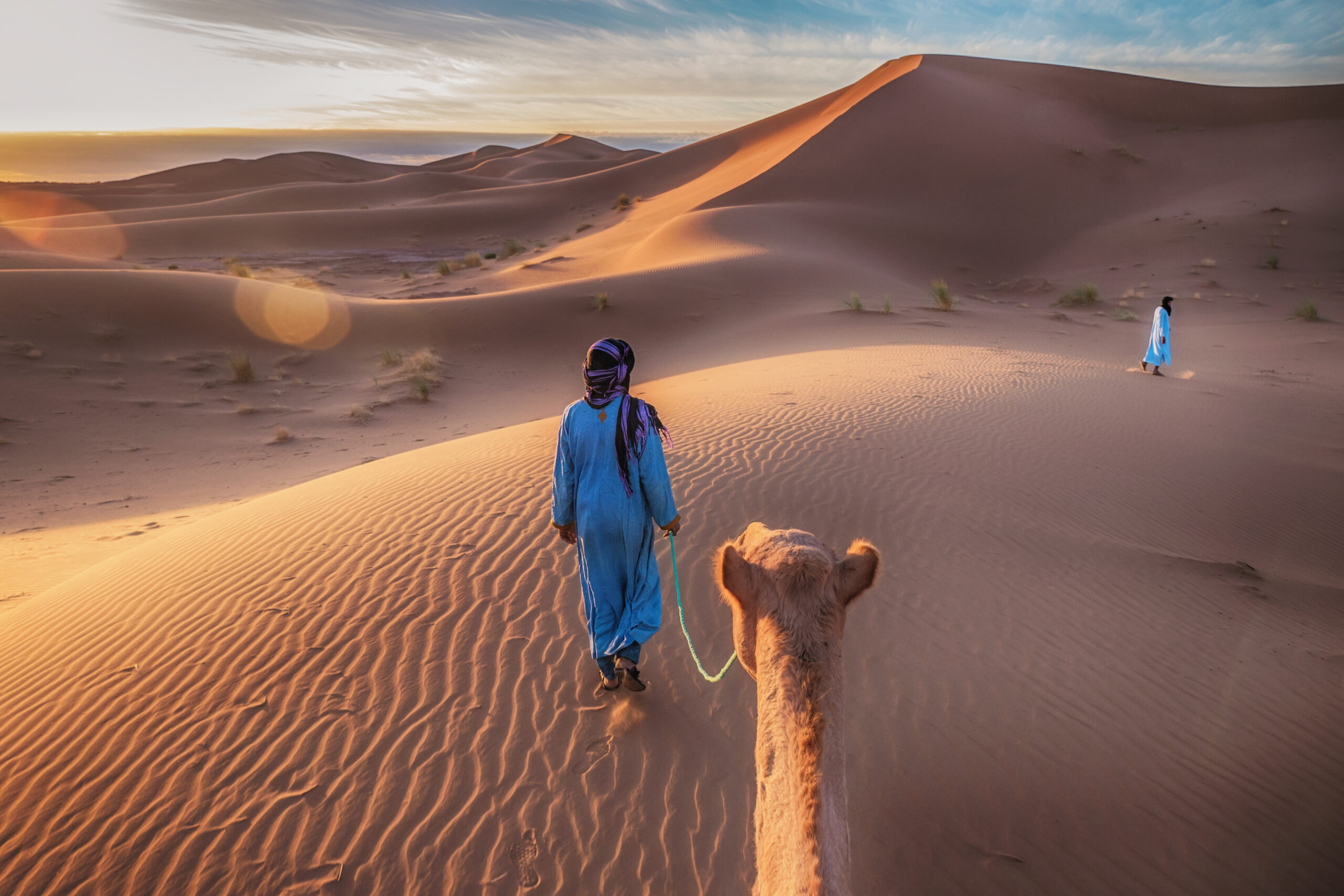
Camel ride in the Sahara Desert in Morocco
Travelweek: What booking trends are you seeing from the Canadian market?
Fettouhi: “The upward trend in sales for Morocco is quite significant, with several tour operators reporting strong enthusiasm for the destination. This growing demand is driven by interest in cultural trips, thanks to Morocco’s millennia-old history, beach holidays along more than 3,500 kilometres of Mediterranean and Atlantic coastlines, as well as nature and adventure travel opportunities, with four major mountain ranges and the vast Sahara Desert. The current figures are highly encouraging and point to a very promising year ahead in 2025.”
Travelweek: What resources do you offer travel advisors?
Fettouhi: “We’re deeply committed to supporting travel advisors, as they play a key role in promoting Morocco and shaping the travel experience for their clients. We offer a wide range of resources, including training programs with the largest travel advisor networks in North America. These take the form of e-learning modules, webinars and destination-focused workshops tailored to their needs.
“In addition, we organize familiarization trips to give advisors first-hand exposure to the destination, and we regularly host roadshows in key cities to meet them directly, strengthen our relationships, and keep them up to date on Morocco’s evolving offerings.
“Our mission is to be a true partner, providing both inspiration and practical tools to help them sell the destination with confidence.”
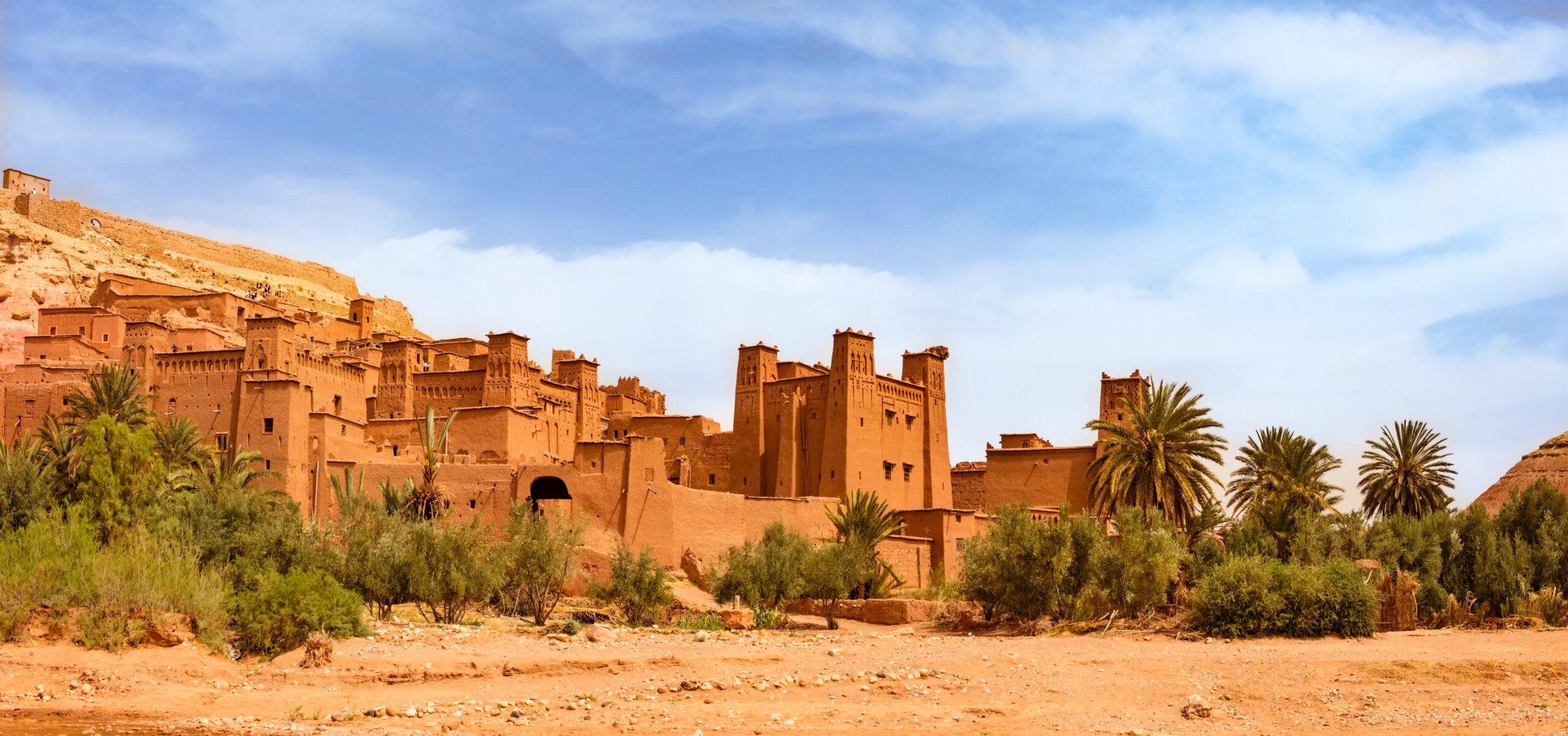
Kasbah Ait Benhaddou
Travelweek: What makes Morocco so iconic?
Fettouhi: “Morocco is a destination like no other, where over a thousand years of history blend seamlessly with a vibrant, modern spirit. From its imperial cities and ancient medinas to
its contemporary art scenes and cutting-edge design, Morocco lives and breathes culture, its culture is alive in the streets, in the hands of artisans, and in the rhythm of daily life. Its diversity is unmatched. Arab, Amazigh, African, and European influences come together in its traditions, languages, and way of life.
“What truly sets Morocco apart is its ability to inspire. For decades, it has drawn legendary creatives like Yves Saint Laurent and Paul Bowles, captivated by its light, rhythm and raw beauty. Morocco isn’t just a place to visit, it’s a place that speaks to the soul.”
“Morocco is a real feast of senses as it stimulates all five senses by a mystical aspect …
“The culinary poetry: Moroccan cuisine is a journey of flavours. From the subtle sweetness of tagines to the complexity of preserved lemons and spices, it has inspired some of the world’s greatest chefs. It’s not just food; it’s an art of living.
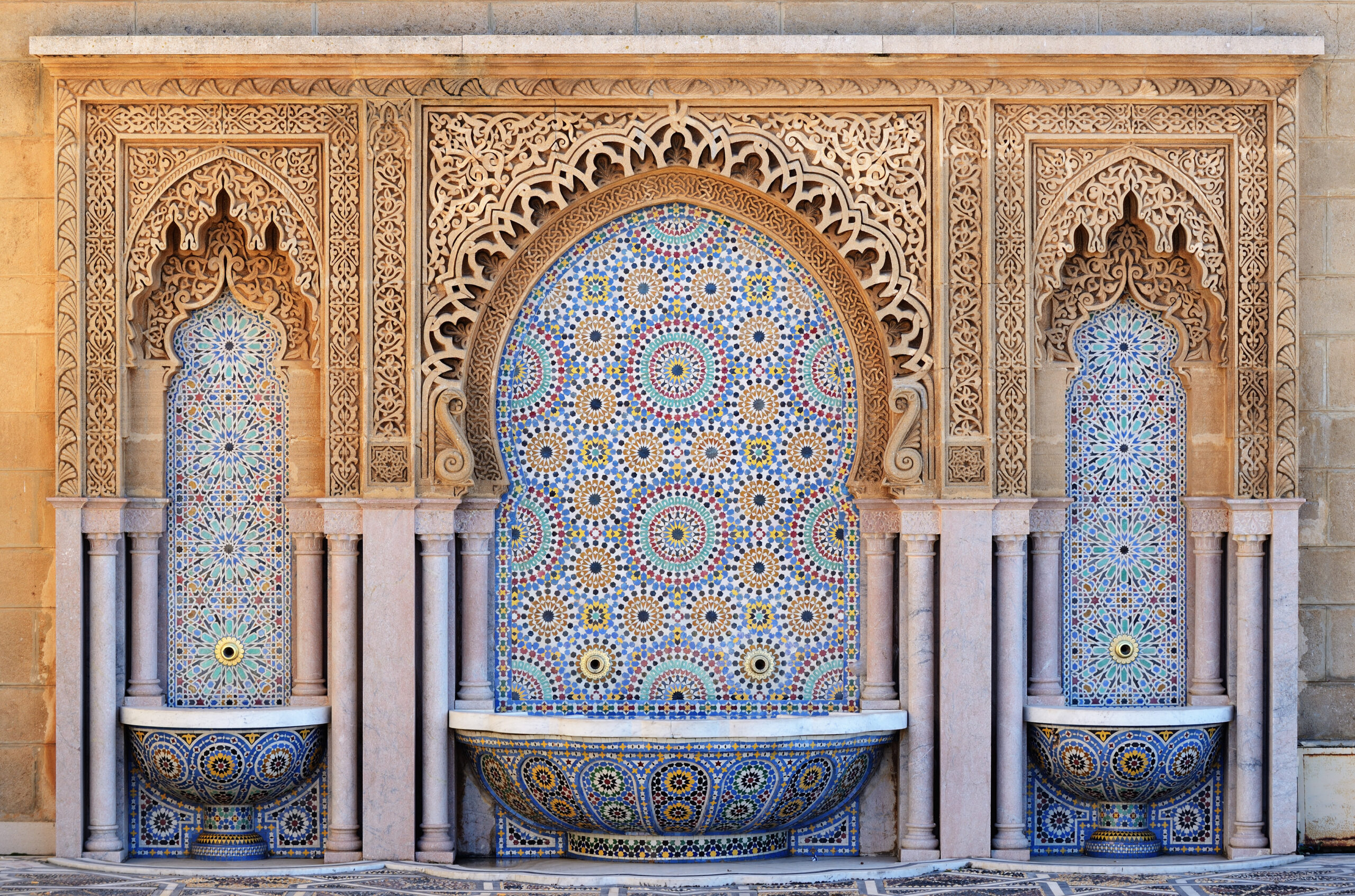
Rabat
“The touch of a fine elegance: Morocco is a country that speaks through texture. The feel of handwoven rugs, the smoothness of tadelakt plaster, the intricate geometry of carved wood or zellige tiles, all showcase a tactile beauty that continues to inspire the world’s most renowned designers.
“The tone of ethereal voices: from the hypnotic rhythms of Gnawa music to Amazigh chants and Andalusian melodies, Morocco’s soundscape is deeply emotional and spiritual. Its musical heritage resonates with artists across the globe, bridging traditional and contemporary expression.
“The scent of good things: the Moroccan air is perfumed with orange blossom, rose water, cedar, saffron, and mint. These natural notes have inspired some of the world’s greatest perfumers, including Christian Dior. Scents in Morocco are memories that linger long after the journey ends.
“The translucent shades of a colourful destination: few places offer such visual splendour: the vivid hues of souks, the golden tones of the desert, the blue alleys of Chefchaouen, or the majestic Atlas Mountains. It’s no wonder Morocco has starred in countless Hollywood films – its beauty is cinematic.
“And that gives a good visual impact on screen: Gladiator, Game of Thrones, Lawrence of Arabia, Kingdom of Heaven, Indiana Jones, to name just a few!”
For more details about travel to Morocco see VisitMorocco.com.
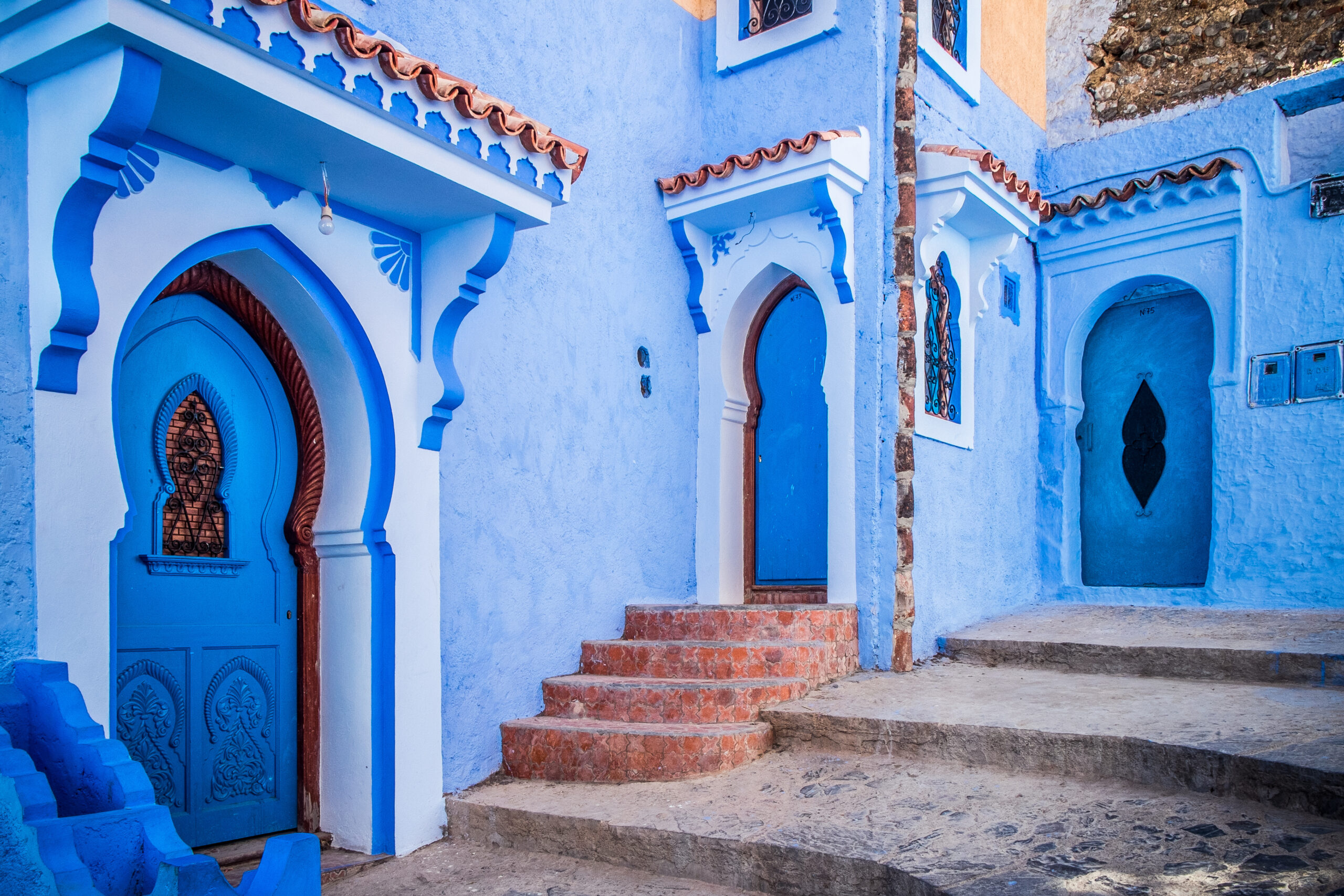
Chefchaouen, Morocco
